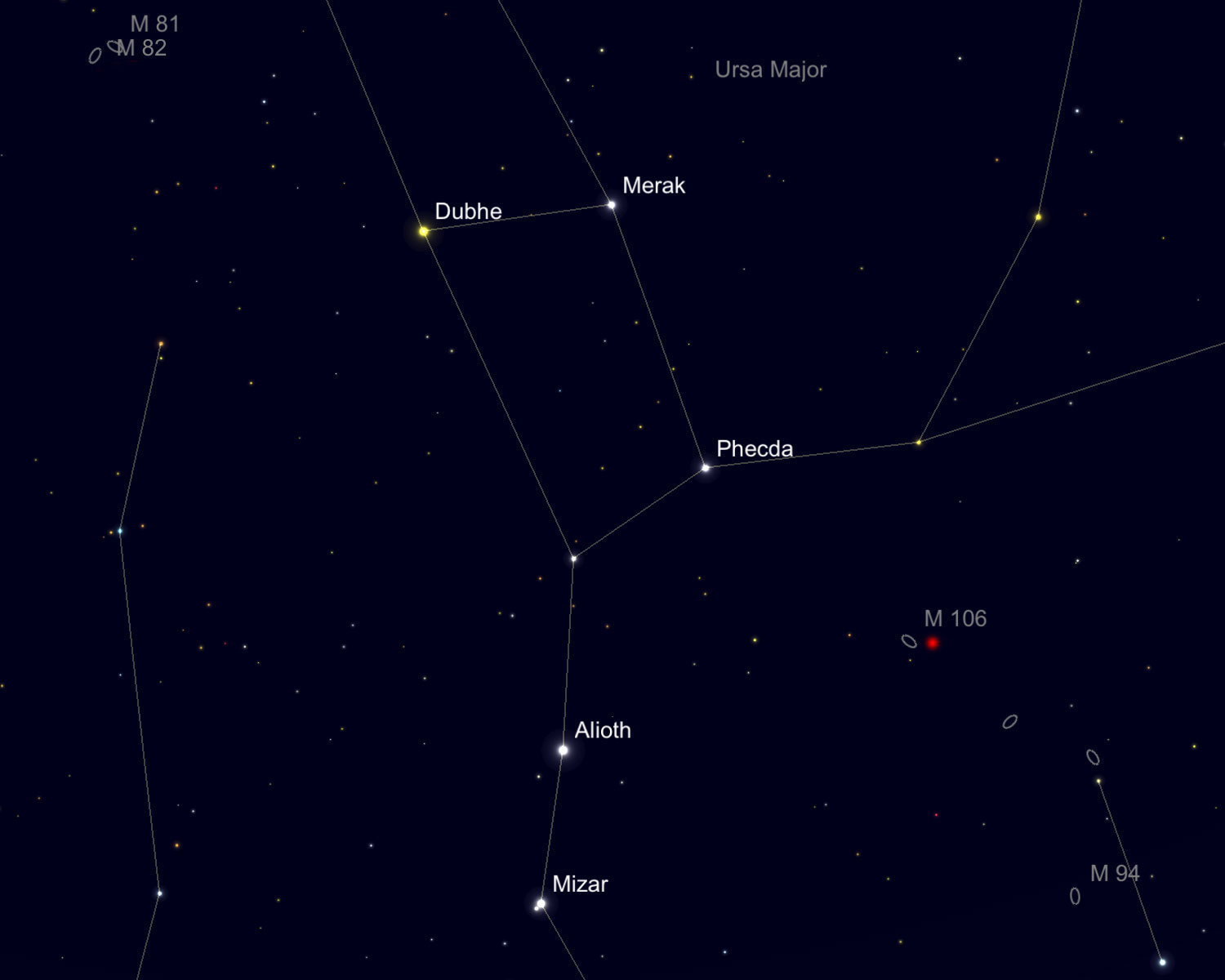
Introduction | Map | Find/Identify | My Best Own Photos | My Own Observations | References || Appendix: My Own Photos
On this page I collect my observations of the spiral galaxy M 106 (NGC 4258) and the small spiral galaxy NGC 4248, the galaxies NGC 4217 and NGC 4226 (together Holm 354), as well as NGC 4231 und NGC 4232 (together Holm 356) plus some more small galaxies in the constellation Canes Venatici.
According to Stoyan, the spiral galaxy M 106 (NGC 4258) in the constellation Canes Venatici can be seen in the smallest binoculars and is an easy object for small telescopes. This is probably only true for dark skies, because I had trouble to recognize this object in the telescope at all. For the eVscope, however, this galaxy was not a problem. In addition, on some of my photos I found the small barred spiral galaxy NGC 4248 close to a star.
On a Vespera photo, I also found the galaxies NGC 4220 (lenticular), as well as NGC 4231 (lenticular) and NGC 4232 (spiral). NGC 4231 and NGC 4232 form the gravitationally-coupled galaxy pair Holm 356. See the evaluation below!
On a Vespera Pro photo, I also found the edge-on spiral galaxy NGC 4217, the spiral radio galaxy NGC 4226 (together, they form the optical galaxy pair Holm 354), the galaxy NGC 4220 (lenticular) as well as NGC 4231 (lenticular) and NGC 4232 (spiral). NGC 4231 and NGC 4232 form the gravitationally-coupled galaxy pair Holm 356. A little farther away there is the galaxy NGC 4346. See the evaluation below!
| M 106 (NGC 4258) | NGC 4248 | NGC 4220 | NGC 4217 (Holm 354) | |||
| Size: 18.6' x 7.2' (Wikipedia) Distance: 23 million light years (Wikipedia) Rating: ** (Stoyan) |
Size: 2' x 0.9' (SkySafari) Distance: 36 million light years (SkySafari) Rating: --- |
Size: 3.3' x 1.0' (SkySafari) Distance: 61 million light years (SkySafari) Rating: --- |
Size: 5.4' x 1.6' (SkySafari) Distance: 61 million light years (SkySafari) Rating: --- |
|||
| NGC 4231 (Holm 356) | NGC 4232 (Holm 356) | NGC 4346 | NGC 4226 (Holm 354) | |||
| Size: 1.2' x 1.1' (Wikipedia) Distance: 334 million light years (Wikipedia) Rating: --- |
Size: 1.3' x 0.7' (Wikipedia) Distance: 327 million light years (Wikipedia) Rating: --- |
Size: 3.2' x 1.3' (Wikipedia) Distance: 40 million light years (Wikipedia) Rating: --- |
Size: 1.3' x 0.6' (Wikipedia) Distance: 326 million light years (Wikipedia) Rating: --- |
The spiral galaxy M 106 is located in constellation Canes Venatici, but is easiest to find from the Big Dipper (see further down). (Image Courtesy of SkySafari Astronomy, www.simulationcurriculum.com)
The spiral galaxy M 106 in constellation Canes Venatici with its neighboring galaxy NGC 4248 (selected; image created with Stellarium)
Find: The spiral galaxy M 106 in constellation Canes Venatici is easiest to find from the Big Dipper. I imagine a line between the two stars Dubhe and Phecda in constellation Ursa Major (or asterism Big Dipper), and if you continue this line for about the same distance, you will arrive at M 106.
Identify: If the spiral galaxy M 106 in the constellation Canes Venatici was found in the way as described above, it is also identified, because it stands relatively alone.
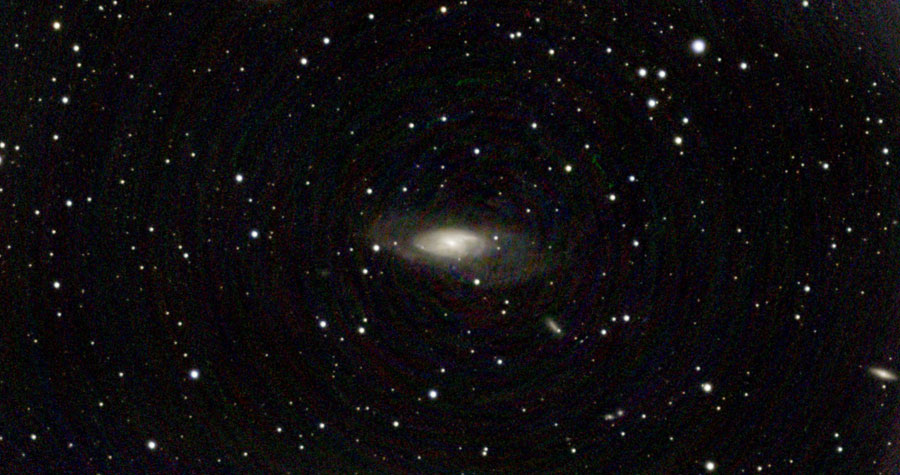 |
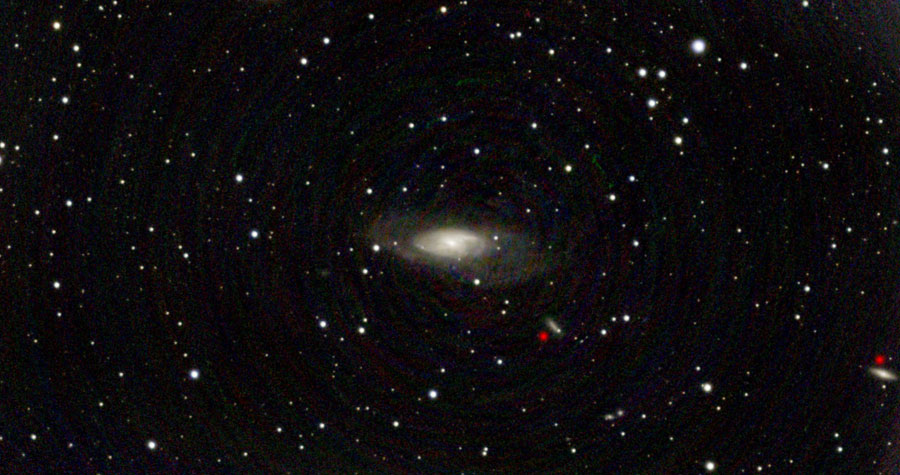 |
|
M 106 - Jun 7, 2023; with NGC 4248, and NGC 4220, 10800s, original |
M 106 - Jun 7, 2023, NGC 4248, and NGC 4220 (right) marked, as well as NGC 4231 and NGC 4232 (at the bottom), 10800s, large |
|
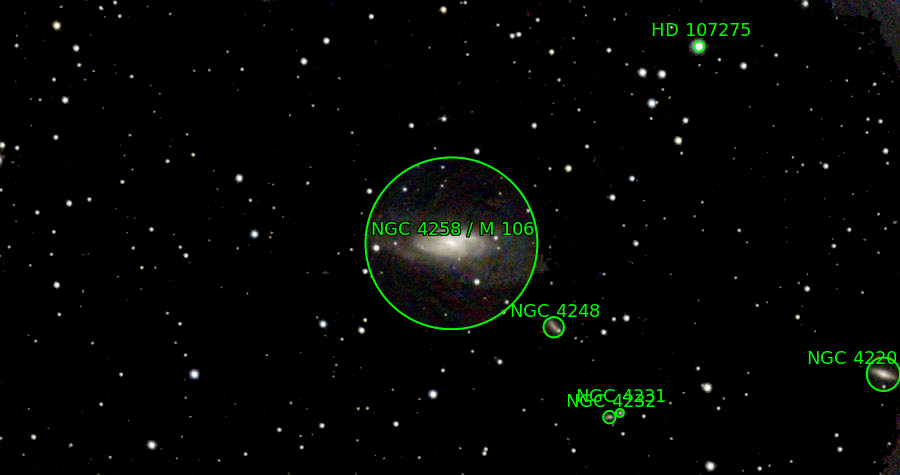 |
||
Evaluation with nova.astrometry.net, NGC 4231 and NGC 4232 at the bottom |
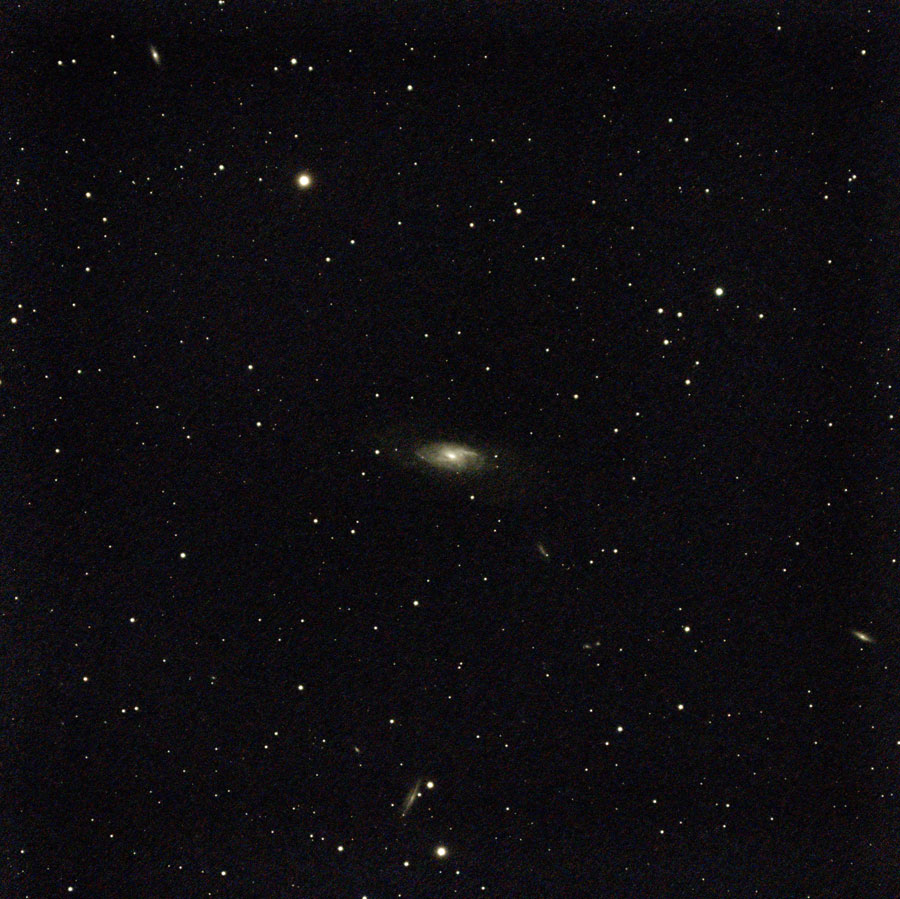 |
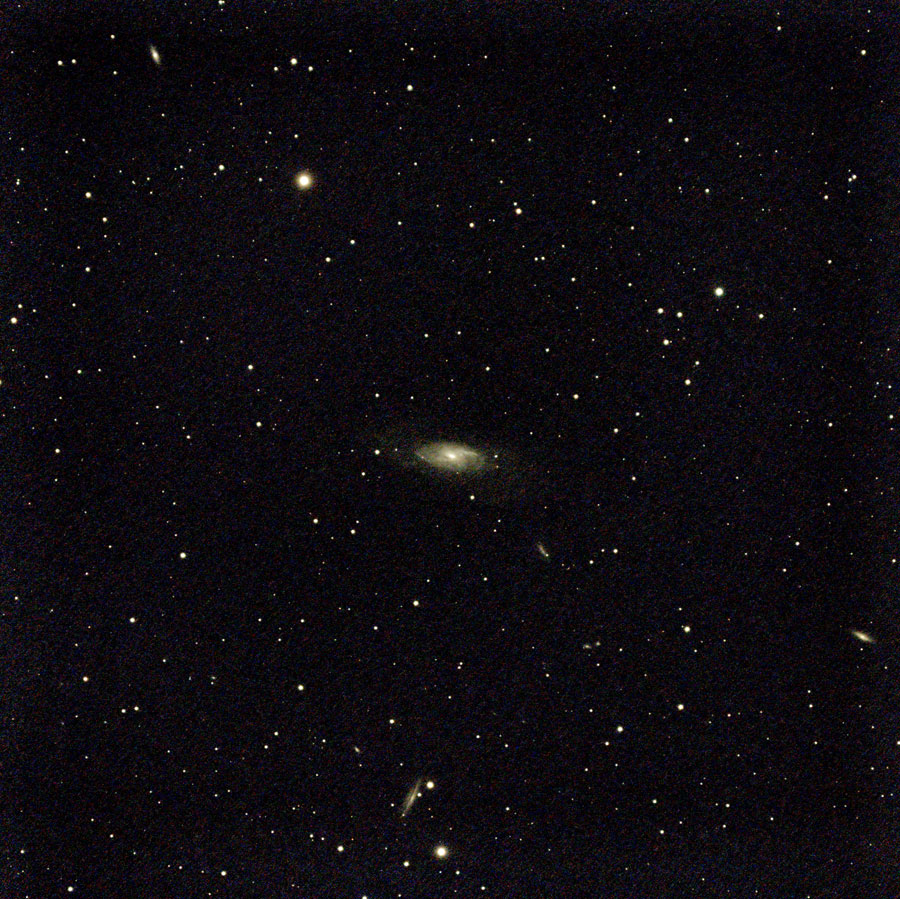 |
|
M 106, May 22, 2024 - 2000p (180 frames = 1800s) |
|
M 106, May 22, 2024 - 2000p (180 frames = 1800s), processed (PSE) |
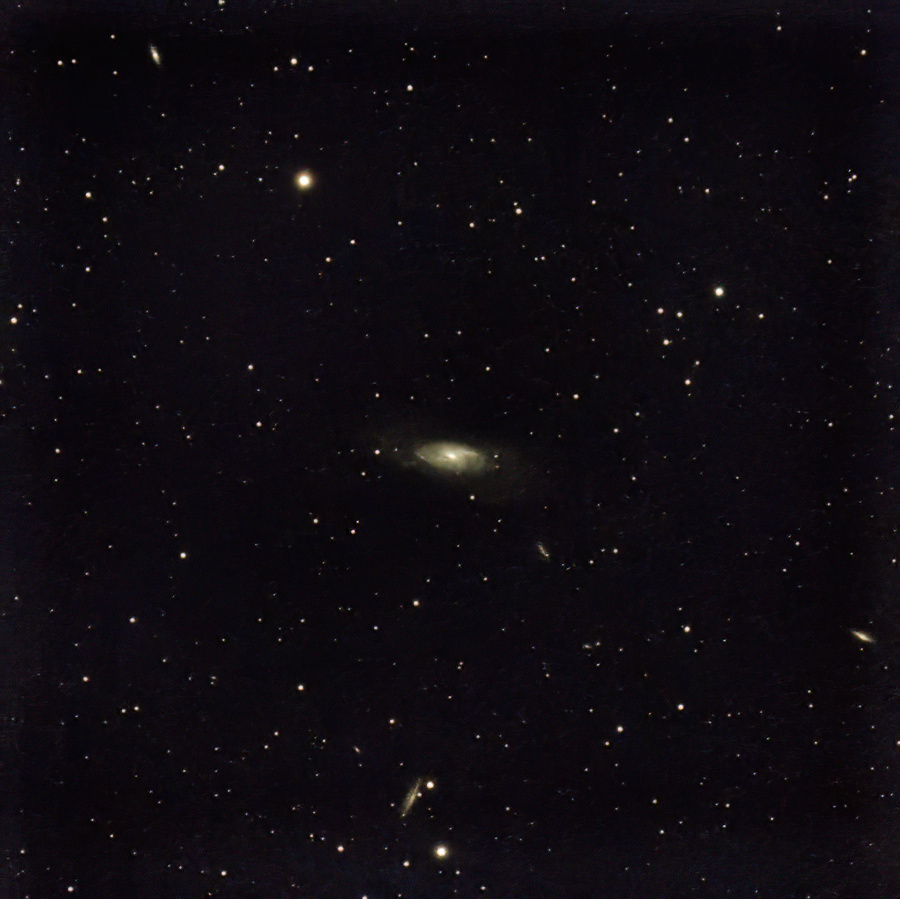 |
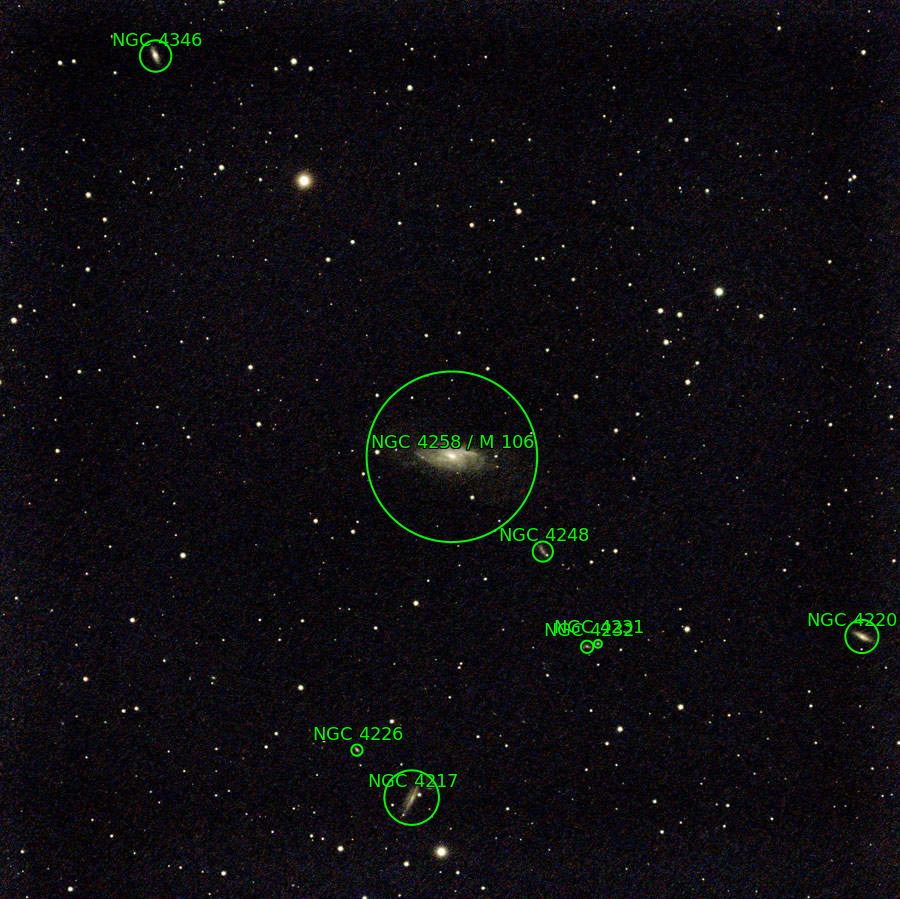 |
|
M 106, May 22, 2024 - 2000p (180 frames = 1800s), additionally denoised (DN) |
|
Evaluation with nova.astrometry.net |
Further galaxies: NGC 4217, NGC 4226, NGC 4231, NGC 4232, NGC 4248, NGC 4220, NGC 4346
 |
 |
|
M 106 - Jun 7, 2023; with NGC 4248 and NGC 4220, 10800s, original |
M 106 - Jun 7, 2023, NGC 4248 and NGC 4220 (right) marked, as well as NGC 4231 and NGC 4232 (at the bottom), 10800s, large |
|
 |
||
Evaluation with nova.astrometry.net, NGC 4231 and NGC 4232 at the bottom |
 |
 |
|
M 106, May 22, 2024 - 2000p (180 frames = 1800s) |
|
M 106, May 22, 2024 - 2000p (180 frames = 1800s), processed (PSE) |
 |
 |
|
M 106, May 22, 2024 - 2000p (180 frames = 1800s), additionally denoised (DN) |
|
Evaluation with nova.astrometry.net |
Further galaxies: NGC 4217, NGC 4226, NGC 4231, NGC 4232, NGC 4248, NGC 4220, NGC 4346